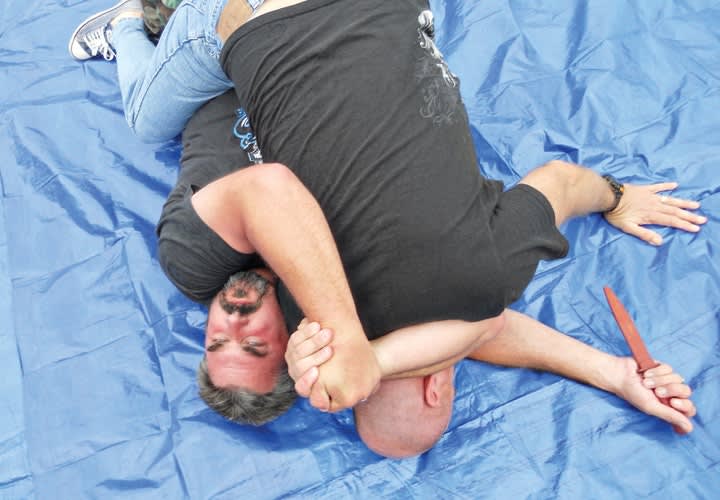For example, if I carry a knife on my person and can get to it and can gut a bad guy who is on top of me and is likely to seriously injure or kill me, then my action is justified even if my agency says I should not use a knife as a weapon. If I use some type of choke hold and the bad guy dies because in my attempt to save myself from serious harm or death I misapply the maneuver and crush his trachea, I'm still covered. Wow! I just broke a golden rule in law enforcement administration standards, I used the words "choke" and "hold" in the same sentence. Remember, no holds are barred in a life-and-death confrontation.
How long should you apply the technique? When the bad guy submits to arrest and stops his assault or he is rendered unconscious, you stop. Once your attacker is no longer a threat, secure him, call for assistance, and check him for specific injuries. For example, when applying the shoulder pin, lateral vascular neck restraint (LVNR), or any other triangle choke-type maneuver, you run the risk of damage to the throat area that restricts the airway. Make sure the subject is inhaling air and exhaling air. If not, follow protocol for respiratory distress and administer CPR as necessary until EMS and backup arrives.
Be Prepared
So what is survival ground fighting in the law enforcement world? It's simply real-world techniques for fighting your way out of a very bad situation while grounded in a position of extreme disadvantage.
The only way to win this war is to be prepared to fight it. Find a qualified instructor, learn some techniques, get the mats out, and practice until you are proficient in the techniques. Work on escape and disengagement techniques as well.











